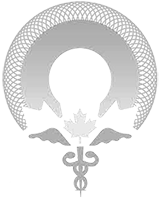Edward Cheung, RRT
Director-at-Large
Edward Cheung is a registered respiratory therapist based out of Calgary, Alberta. He graduated with a Bachelors of Science, with focus in physiology, from McMaster University in Hamilton, Ontario. He also completed a double minor in environmental science and biochemistry during his time there. He later went on to become a respiratory therapist through the Michener Institute of Applied Health Sciences in Toronto, Ontario. Upon graduation, Edward developed an interest in hyperbarics, which lead to him relocating to Calgary and entering the field. After gaining two years of experience, he was certified through the UHMS as chamber technician. He remains an active member in critical care settings, splitting his time between intensive care units, emergency department, wards, and a hyperbaric unit. He recently completed the hyperbaric safety director course to advise and educate his peers, where they focus on the delivery of operationally safe, evidence-based treatments in a monoplace setting. His passion of culture and travel also brought Edward to the aviation-medical field. As a senior flight crew member, he works in small teams to navigate the nuances of intra- and intercontinental transport of critically ill patients for repatriation or medical evacuation. As a member of the UHMS and CUHMA, Edward hopes to build on his foundational knowledge, whilst collaborating with other disciplines to further legitimize the use of hyperbarics in different medical pathways, research, and education.
Cesar Orellana, MD
Director-at-Large
Dr. Orellana is an infectious disease specialist at the Grand River Hospital and St. Mary's General Hospital in Kitchener, Ontario. He treats a wide range of infections, from acute and critical illnesses to those related to cancer. He also provides compassionate care to individuals living with HIV, viral hepatitis, and other sexually transmitted infections. Dr. Orellana is committed to the comprehensive management of complex diabetic foot disease in the Waterloo Region. Through his specialized wound care clinic, he helps patients avoid amputation, incorporating advanced treatments like hyperbaric oxygen therapy (HBOT) since 2021. A graduate of Ross University School of Medicine, Dr. Orellana completed his training in internal medicine and infectious disease at SUNY Upstate Medical University. He is a fellow of the Royal College of Physicians and Surgeons of Canada and the American College of Physicians, and a diplomate of the American Board of Internal Medicine.
 CUHMA
CUHMA